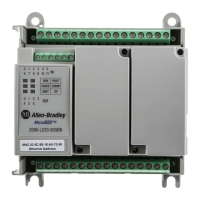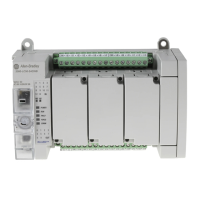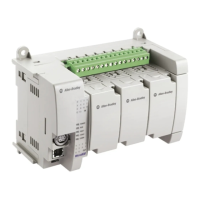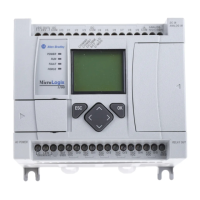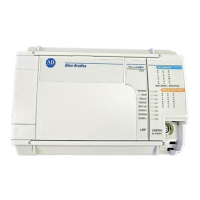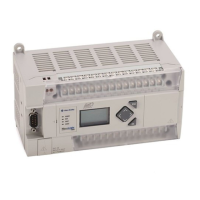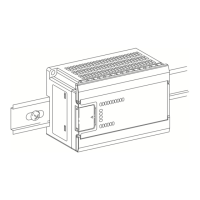Ladder Diagram (LD) elements Chapter 3
Rockwell Automation Publication 2080-RM001D-EN-E - February 2015 45
You can add the following contact element types to your LD program from the
LD Toolbox in Connected Components Workbench.
Contact element Description
Direct contact on page 46 Direct contacts support a Boolean operation between a connection line state and a Boolean variable.
Reverse contact on page 46 Reverse contacts support a Boolean operation between a connection line state and the Boolean negation of a
Boolean variable.
Pulse rising edge contact on page 47 Pulse rising edge (or positive) contacts support a Boolean operation between a connection line state and the
rising edge of a Boolean variable.
Pulse falling edge contact on page 47 Pulse falling edge (negative) contacts enable a Boolean operation between a connection line state and the
falling edge of a Boolean variable.
Adding contact elements
Follow these steps to add a contact element to the ladder rung or change the type
of contact used.
Add a contact element
1. Verify the LD program has a defined rung for the contact.
2. From the Toolbox, drag the contact element into the language editor and
position it on the rung.
Tip: A plus sign (+) appears on top of a Toolbox element when you hover over a valid target. Release the
mouse button to add the element.
Tip: You can use keyboard shortcut keys to add elements to your LD program. See LD Keyboard shortcuts on
page 54.
Insert a parallel contact
1. From the Toolbox, drag the branch element into the language editor, and
place it on the existing contact.
2. From the Toolbox, drag a contact element into the language editor, and
place it on the branch.
Change the type of contact
In the language editor, select the contact, then press the space bar until the the
contact type you want to use is displayed in the language editor.
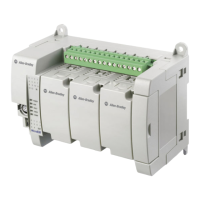
